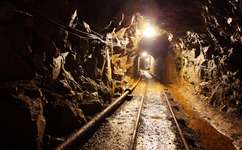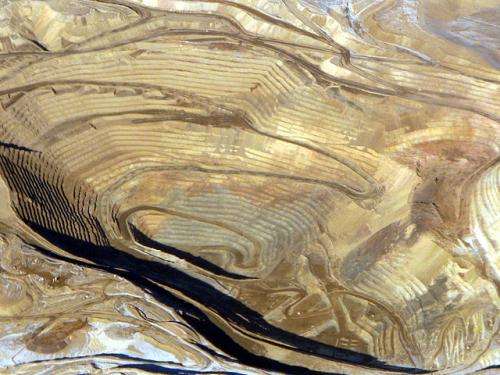Humans leaving a permanent mark on deep Earth

Human forays deep underground, such as boreholes, mines and nuclear bomb tests, are leaving a mark on the planet's geology that will last for hundreds of millions of years, say scientists.
In a new report, published in the journal Anthropocene, they say we are altering Earth's rocks in a way that's unique in the planet's 4.6 billion-year history.
The phenomenon adds weight to the 'Anthropocene' concept – the idea that we have changed the planet so dramatically that it has now entered a new, distinctive phase in its history.
Scientists disagree about whether the Anthropocene should be officially recognised as part of the geological timeline.
Until now, much of the focus has been on changes at the surface, to the atmosphere, oceans and ecosystems. But according to Dr Jan Zalasiewicz of the University of Leicester, who led the research, our influence below ground is just as pronounced.
'The underground world is not one that most of us experience directly,' he says. 'Effectively it's out of sight, out of mind.'
'But we're leaving a mark on the geology that will last for millions of years, probably more. Whatever we do in the future, that influence is only going to grow – we've set in motion a new phase in the planet's history.'
Our imprint on Earth's geology dates back to the Bronze Age and Neolithic, when shallow mines were dug for metals and flint.

As the industrial revolution unfolded from around 1760, the world's hunger for minerals and coal grew rapidly. Mines became deeper and more widespread and, in 1863, the first underground transport network was built in London.
These activities have all altered the fabric of the rock and, in some cases, introduced man-made materials never before seen in the Earth's geological record.
From the mid-20th century, our excursions into deep rock gathered pace, spreading from land to the sea floor. Deep caverns have been dug out to store hazardous waste, and nuclear bomb tests have fractured and melted rock up to 1.5 kilometres below the surface.
The total length of all the world's oil-field boreholes is now estimated at 50 million kilometres, which is roughly the distance between Earth and Mars, or the total length of the global road network.
The world's deepest borehole, the Kola Superdeep borehole in Russia, extends 12 kilometres into the Earth's crust.
The closest any other animal is known to have come to these depths are the 12 metre-deep caves dug by Nile Crocodiles for hibernating in the dry season.
The vast changes that we've set underway at the surface will also eventually form a highly distinctive layer in the Earth's rocks, explains Zalasiewicz.
But there it will be affected by weathering and erosion which, over time, will wear much of it down. Our traces in the deep rocks lie well beyond the reach of these processes, so they are effectively locked in.
'If the geologists of future civilisations are very lucky, they will find a distinct surface layer with lots of cross-cutting features extending down for a number of kilometres,' says Zalasiewicz.
'It will take quite some power of deduction to piece the puzzle together,' he adds.
The term Anthropocene was first coined over a decade ago by Nobel Laureate chemist, Paul Crutzen. It has since gained momentum, but some scientists believe it's premature to recognise it as an official boundary in the geological timeline, and there is controversy about when it started.
Zalasiewicz and his colleagues, including scientists from NERC's British Geological Survey, will submit recommendations to the International Commission on Stratigraphy in the next couple of years.
More information: Jan Zalasiewicz, Colin N. Waters, Mark Williams, 'Human bioturbation, and the subterranean landscape of the Anthropocene', Anthropocene, 2014, DOI: 10.1016/j.ancene.2014.07.002.
Provided by PlanetEarth Online
This story is republished courtesy of Planet Earth online, a free, companion website to the award-winning magazine Planet Earth published and funded by the Natural Environment Research Council (NERC).

















